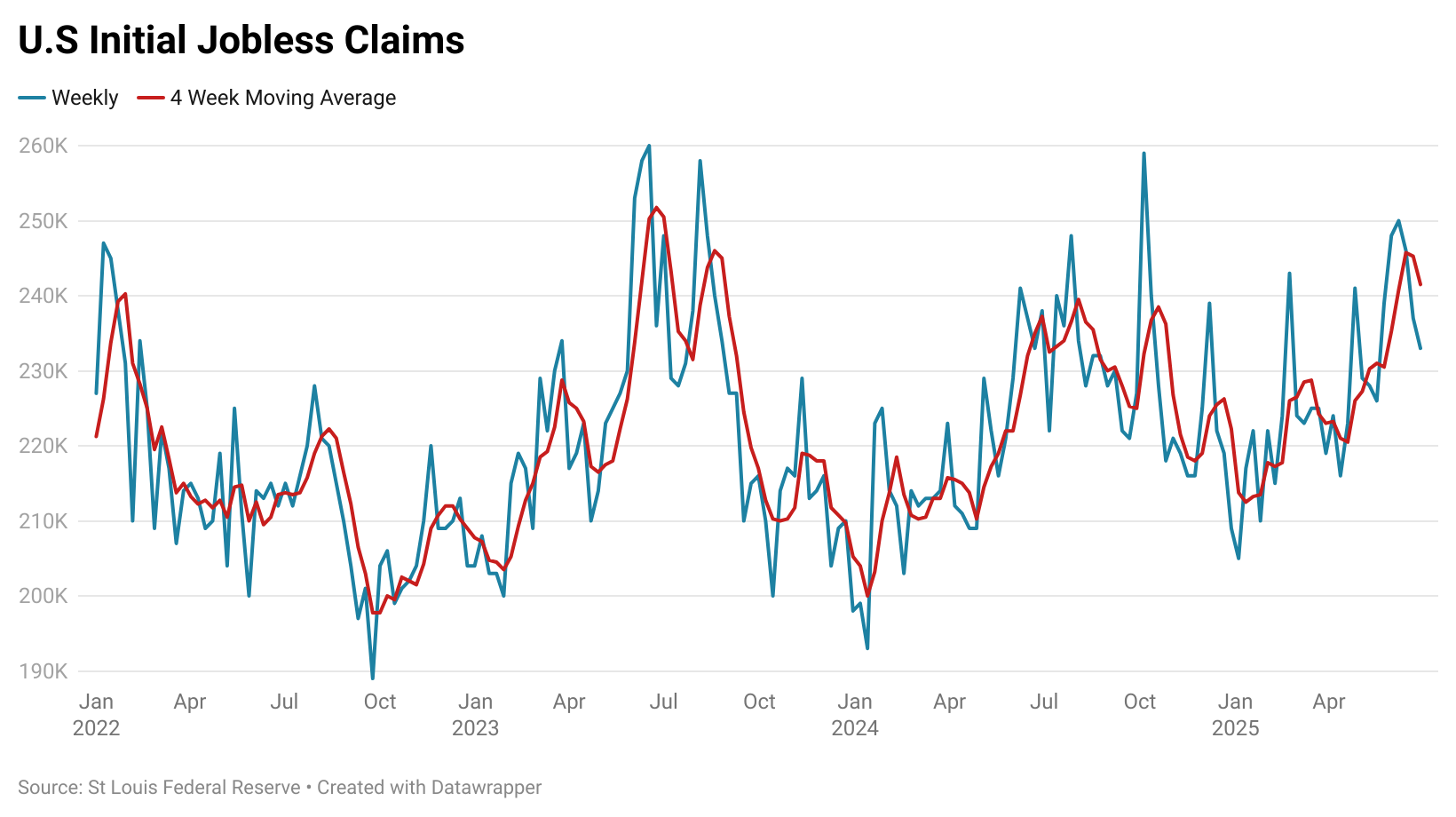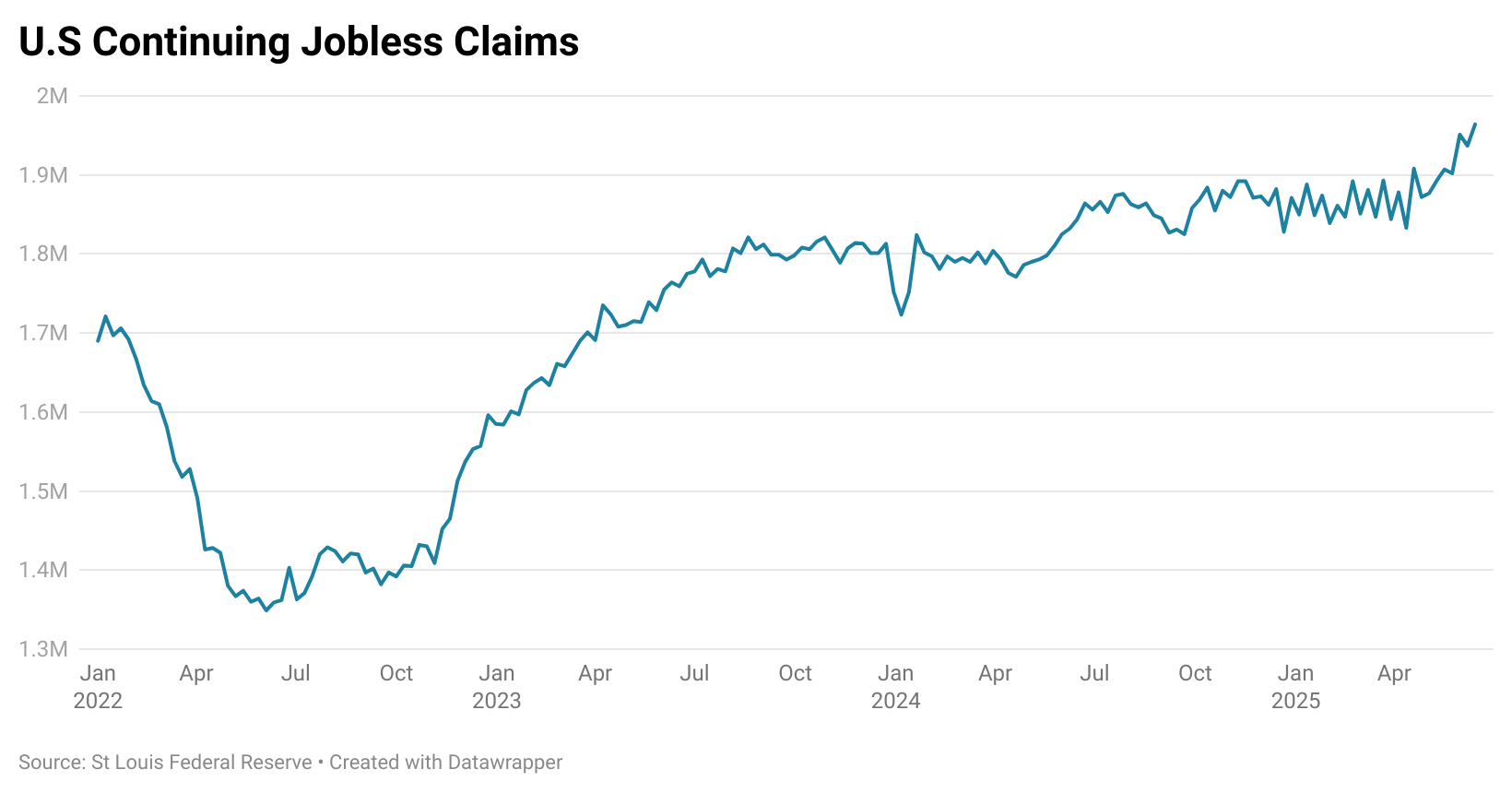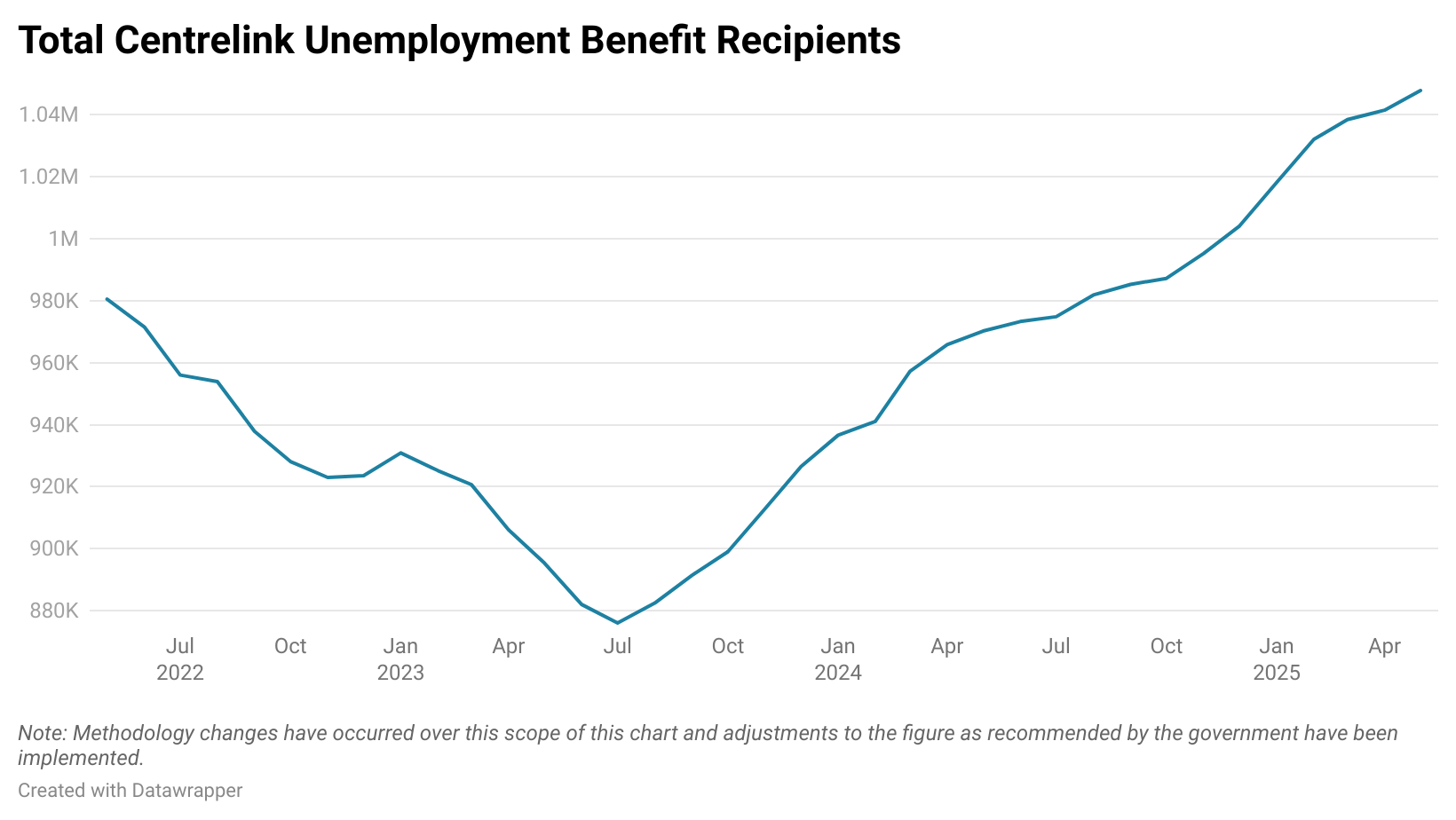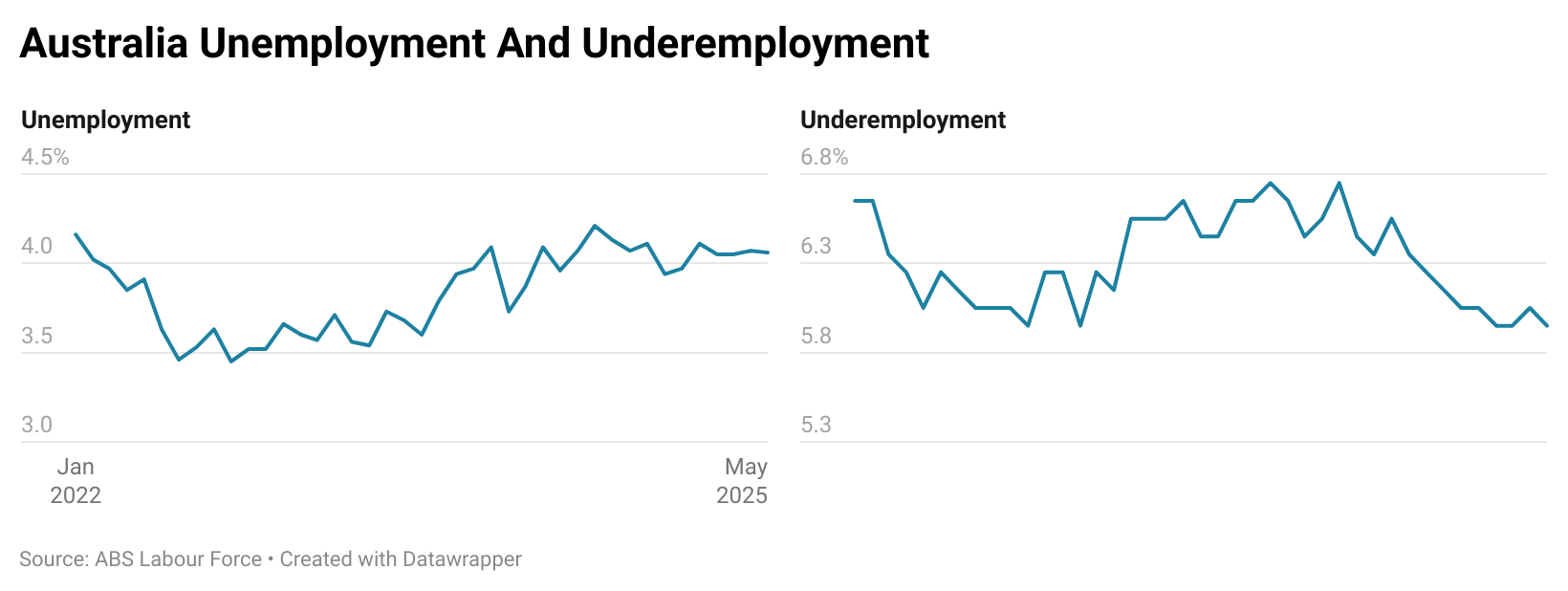When it comes to economic statistics, few are as hotly contested as government employment data.
Issues such as survey response rates, one hour of work per week counting as being employed and the likelihood of significant later revisions are often cited as potential distortions to the “true” picture of the nation’s labour market.
For this reason, some economists in the U.S. empahasise jobless claims instead. The statistics detail the number of new claims each week, as well as providing a rolling total of the number of people currently on unemployment benefits.

With unemployment benefits generally not being means-tested in the U.S., the jobless claims data can provide some useful insights into the path of the American labour market.

Unfortunately, we lack an ideal analog here in Australia. The closest we have is the JobSeeker and other unemployment payment statistics.
Given the fact that these payments are heavily means-tested, they don’t provide the level of insight of their U.S. equivalent, but they do provide a degree of utility as a broader directional indicator.
The Hard Numbers
Before we kick off into the hard numbers, just a few things to note:
- The figures have been adjusted to take into account methodology changes made by the ABS to the degree they state in their notes accompanying the data release
- Not all unemployment benefit recipients are unemployed; some are employed, or their partners are, but they don’t earn enough to no longer be entitled to a part payment
- On the other hand, not all unemployed people are on Centrelink. If one’s partner earns more than $67,000 per year or if they have a significant income source in excess of what is allowed, then an individual doesn’t qualify for a payment. Further still, those with partners with significant earnings but low enough to qualify may not bother simply because jumping through all the hoops is not worth the hassle for a part payment.
The number of Centrelink unemployment benefit recipients bottomed out at 876,000 in July 2023. Interestingly, this is quite a bit later than when the ABS unemployment rate bottomed out in October 2022.

Since then, the number of people receiving one form of unemployment benefit or another has risen by 172,000, or 19.6%.
While part of this increase can be attributed to the rise in the population seen in the last two years, a large majority of the increase is arguably due to the impact of a slowing labour market.
With the RBA and Treasury both expecting the rise in unemployment to remain very mild, the continued uptrend in the number of unemployment benefit recipients is a potential cause for concern.

Since the slowing of the economy kicked off in Q3 2022, the impact on the labour market has been relatively contained, despite seeing market-based employment indicators such as hours worked fall into recession, even with near record high population growth.
So far, the true scale of the deterioration in the underlying fundamentals of the labour market has been obscured by the growth in the ranks of generally taxpayer-funded employment, aka non-market jobs.
But if the market sector is forced to largely stand on its own as the states attempt to repair their budgets, there is a chance that the true reality of the labour market could be swiftly unmasked for all to see.
Ultimately, the labour market remains in the same place it has been for the last 18 months: in the hands of federal and state policymakers. If they pull back for whatever reason, then things could deteriorate; if they keep the hammer down, then the current status quo may continue for longer than many anticipate.

